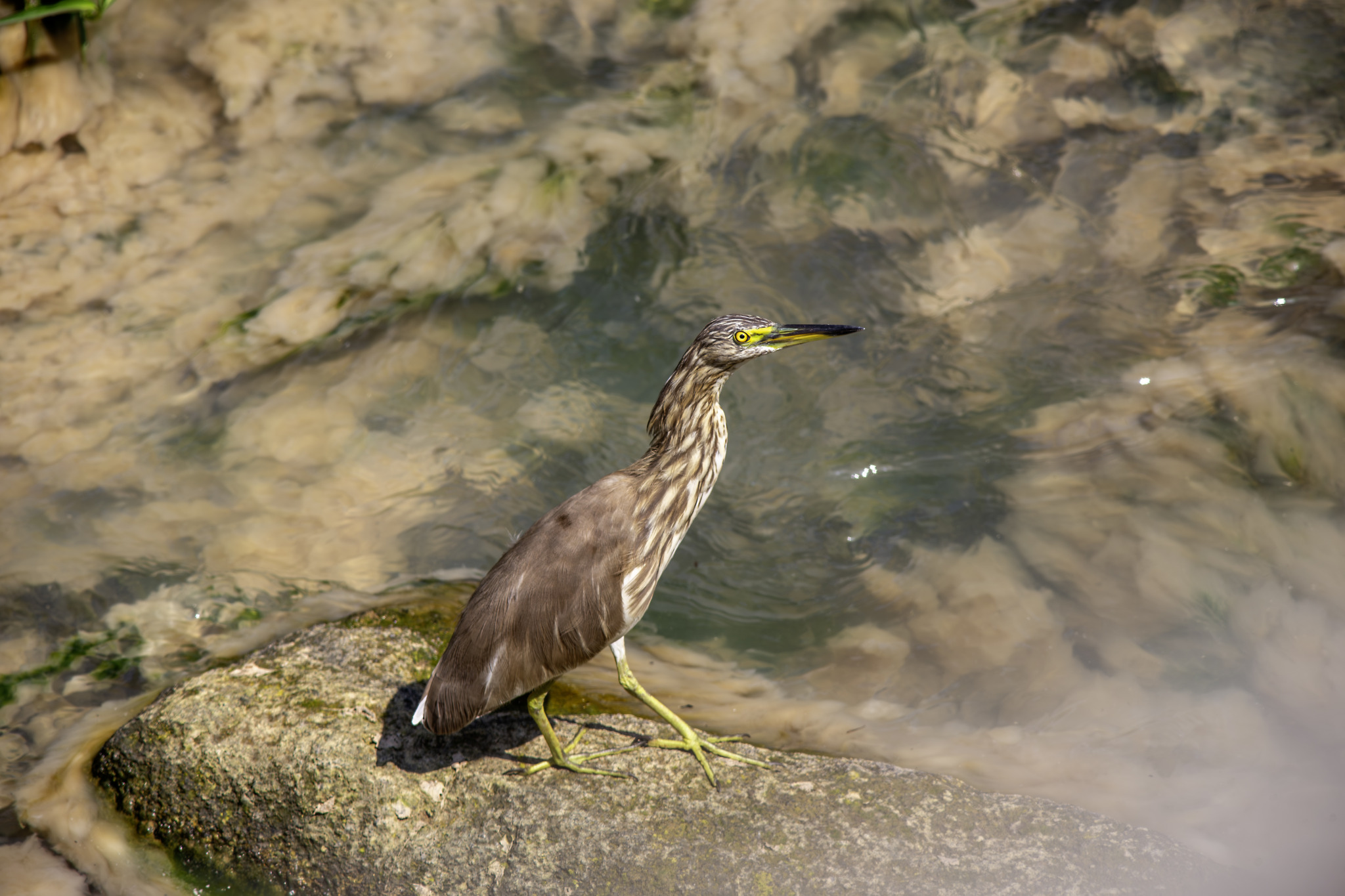The Indian Pond Heron (Ardeola grayii) is a small heron species found across the Indian subcontinent and Southeast Asia. Here are some key features and characteristics of the Indian Pond Heron:
- Appearance:
- Size: The Indian Pond Heron is about 45 centimeters (18 inches) in length.
- Color: In breeding plumage, they have a striking combination of maroon-brown and yellowish hues with a white wing patch visible during flight. During the non-breeding season, they appear mostly white and dull brown, which provides camouflage in their habitat.
- Legs and Bill: They have yellow legs and a sharp, pointed bill that is yellow at the base and black towards the tip during the breeding season. In the non-breeding season, the bill is mostly yellow.
- Habitat:
- The Indian Pond Heron is typically found in a wide range of aquatic habitats including freshwater ponds, lakes, rivers, marshes, and even in agricultural fields and urban wetlands.
- They prefer shallow waters where they can easily catch their prey.
- Distribution:
- This species is widely distributed across the Indian subcontinent, including India, Pakistan, Nepal, Bangladesh, and Sri Lanka. It is also found in parts of Myanmar and Thailand.
- Diet and Feeding Habits:
- The Indian Pond Heron is an opportunistic feeder with a diet consisting mainly of fish, insects, crustaceans, amphibians, and small reptiles.
- They are typically solitary feeders, using a sit-and-wait strategy to catch prey. They stand still or move slowly, blending into their surroundings until prey comes within striking distance.
- Behavior:
- Indian Pond Herons are generally solitary but may be seen in small groups, especially during the breeding season.
- They are often seen standing motionless at the edge of the water or stalking prey with slow, deliberate movements.
- Breeding:
- Breeding season varies depending on the region but generally occurs during the monsoon season when water levels are high and food is abundant.
- They nest in colonies, often alongside other species of herons, egrets, and cormorants. Nests are constructed from sticks and are typically placed in trees or shrubs near water.
- Females lay 3-5 pale blue-green eggs, and both parents take part in incubating the eggs and feeding the chicks.
- Conservation Status:
- The Indian Pond Heron is classified as Least Concern by the IUCN due to its wide distribution and large population.
- While not currently at significant risk, habitat destruction and pollution of water bodies can pose threats to their populations.
- Cultural Significance:
- These herons are a common sight in their range and are often featured in local folklore and traditional art.
- They are considered an important part of the wetland ecosystems, playing a role in controlling insect and fish populations.
In summary, the Indian Pond Heron (Ardeola grayii) is a widely distributed, adaptable species known for its distinctive breeding plumage and its presence in a variety of wetland habitats across the Indian subcontinent and Southeast Asia. Its solitary feeding habits and opportunistic diet make it a resilient species, while its preference for nesting in colonies highlights the importance of suitable nesting sites for its reproductive success.
Visited 867 times, 7 visit(s) today
Views: 1434
Subscribe to the newsletter:
